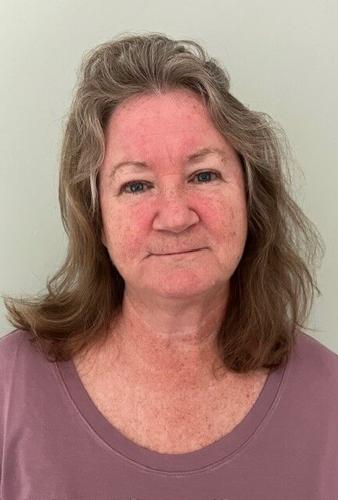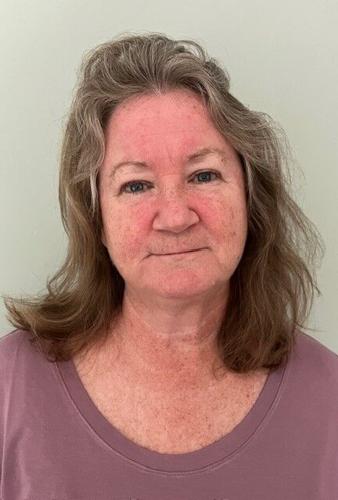This column was edited at 5:10 p.m. Thursday, Feb. 20, 2025, to correct information about Safe2Say Something call center staff.
It was difficult to read the LNP | LancasterOnline report about a Manheim Township High School lacrosse player exposing his genitals to an unwilling teammate who was pinned down on a bed by another teammate.
As LNP | LancasterOnline reported, “No one in the school district’s administration — not the superintendent, not the athletic director, not the lacrosse coach, not the human resources director or anyone else who learned of the incident — notified state authorities, despite their status as ‘mandatory reporters.’ ” No one in the district seems to have filed a report with ChildLine, Pennsylvania’s hotline for reporting suspected child abuse and neglect.
The harsh reality, as illuminated by LNP | LancasterOnline reporting, is that this youth’s trauma-filled experience was not an isolated occurrence in Lancaster County.
Lancaster Country Day School students were traumatized when their real photos were altered by artificial intelligence to create explicit deepfake nude images.
Families were perplexed by Country Day officials’ failure to swiftly notify ChildLine or law enforcement despite a report being made to Safe2Say Something, where call center staff are mandated reporters. (The Safe2Say Something program is run by the Pennsylvania Office of Attorney General.) Adding to the confusion: Lancaster County District Attorney Heather Adams acknowledged the “unimaginable” trauma experienced by the victims of the deepfakes, while saying Pennsylvania’s law on reporting suspected child abuse did not apply. State law recognizes child-on-child incidents as unique and requires reporting based on a limited list of potential crimes that does not include the creation of deepfake nude images.
LNP | LancasterOnline also has reported on the shortcomings of Pennsylvania’s mandatory reporting law and the work-arounds used by members of the Plain community to avoid filing child sexual abuse reports directly with ChildLine.
Alone and combined, each of these incidents confirm flaws in the design, implementation and effectiveness of Pennsylvania’s approach to the mandatory reporting of abuse against children and youth, including by other youth.
They also reveal the consequence of Pennsylvania having no independent mechanism to monitor compliance with child protection laws, receive and respond to complaints or concerns, identify trends or to measure the laws’ effectiveness. As a result, troubling trends can percolate below the radar. County and state officials insist that such issue spotting happens through licensing and quality assurance initiatives. What they don’t share is the insular way in which the data is collected and analyzed; they also don’t detail the limited ways in which feedback is sought and heeded, or how rarely trends are identified and addressed in a timely fashion.
That isn’t an indictment. There are good people doing good work; the systems in which they work have value and our investments in them are worthwhile.
Nevertheless, the commonwealth permits consequential decisions to be made, and significant public dollars to be spent, affecting children’s safety without insisting on any independent oversight. The current approach allows policymakers to convince themselves that any confusion, missteps or even egregious behaviors are isolated in nature, rather than an indication of systemic problems.
In 2011, in response to the Jerry Sandusky child sexual abuse case, Pennsylvania lawmakers created the Task Force on Child Protection, seeking to restore public confidence regarding the safety of children, including through laws “relating to the reporting of child abuse.” Pennsylvania enacted laws expanding the list of persons legally mandated to report suspected child abuse. Criminal penalties for failure to report abuse were increased. And fees were raised on birth certificates to increase funding to train mandated reporters.
Not long after this, a York County nonprofit leader was criminally charged for failing to report youth-on-youth sexual contact. Immediately, it was clear there was a need for clarification. Yet the law and training remained — and remains — the same.
The legal changes also contributed to the pressure on ChildLine and county child welfare agencies from general protective services reports. If Childline staff determine that a report from a mandated reporter does not rise to the level of suspected abuse or neglect, they code the report “GPS” and still send it to the county agency. In 2023, ChildLine processed more than 173,000 general protective services reports in addition to 40,301 child abuse reports. General protective services reports involve concerns that a child or family needs some intervention or support related to issues such as caregiver substance use, child’s behavioral health or disability concerns, unstable housing or truancy. County agencies sort through, screen out and conduct assessments for general protective services reports, while trying not to let reports of sexual, physical abuse or serious neglect slip through the cracks.
Late last summer, diverse stakeholders invited leaders from the Pennsylvania departments of Education and Human Services to meet. The outreach started from an overarching question: How is Pennsylvania assessing whether the child protection reforms made in response to the Sandusky case are working and whether there have been unintended consequences. Additionally, we hoped to address:
— Conflicting messages emphasizing the need to report, while also expressing caution about the disproportionate impact reporting has on Black and Latino families.
— Diverting nonabuse cases from county child welfare agencies.
— Clarifications about when and if to report youth-on-youth incidents.
— Approval of mandatory reporting curriculums and spending to train mandated reporters.
Both the departments of Education and Human Services chose not to meet or answer the questions.
Asked at a fall political debate about the state of mandatory reporting, Dave Sunday, now Pennsylvania’s attorney general, suggested the importance of an “assessment” to find out “exactly what’s going on out there.” It’s unclear if Sunday is undertaking such an assessment.
The traumatizing experiences of youths in Lancaster County and the confusion that has ensued should serve as the inspiration and incentive for Gov. Josh Shapiro, the Pennsylvania General Assembly and Attorney General Sunday to act with intention and urgency to comprehensively evaluate the commonwealth’s child protection laws, starting with clarified expectations and accountability around mandatory reporting.
Cathleen Palm is a survivor and the founder of The Center for Children’s Justice, an independent nonprofit dedicated to protecting Pennsylvania’s children.






![Lancaster Country Day officials should face accountability for mishandling explicit deepfakes that harmed students [editorial]](https://bloximages.newyork1.vip.townnews.com/lancasteronline.com/content/tncms/assets/v3/editorial/e/59/e592354a-a5f8-11ef-a00c-9756d8881c3a/673bb99d5ef0e.image.jpg?resize=150%2C97)
![Lancaster County Amish children must be protected from sexual abuse. All children deserve to be safe from such horrors. [editorial]](https://bloximages.newyork1.vip.townnews.com/lancasteronline.com/content/tncms/assets/v3/editorial/5/2c/52c25c5c-54d8-11ef-a16c-a7bca4711f87/66b39dbb01035.image.jpg?resize=150%2C70)